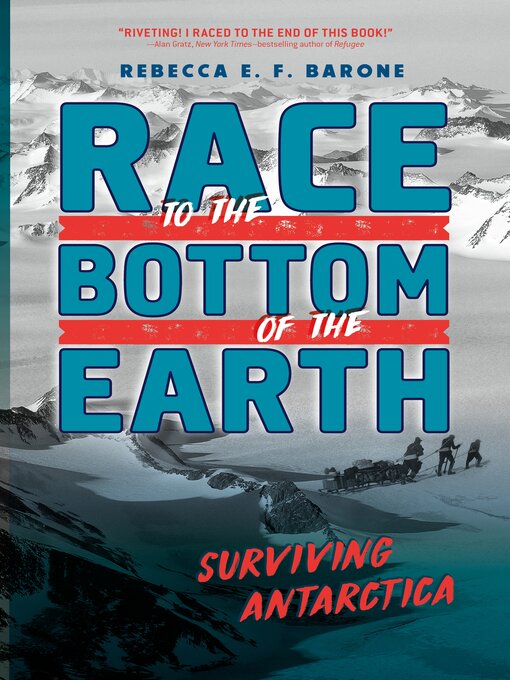Equal parts adventure and STEM, Rebecca E. F. Barone's Race to the Bottom of the Earth: Surviving Antarctica is a thrilling nonfiction book for young readers chronicling two treacherous, groundbreaking expeditions to the South Pole—and includes eye-catching photos of the Antarctic landscape.
"Riveting! I raced to the end of this book!" —Alan Gratz, New York Times bestselling author of Refugee
In 1910, Captain Robert Scott prepared his crew for a trip that no one had ever completed: a journey to the South Pole. He vowed to get there any way he could, even if it meant looking death in the eye. Then, not long before he set out, another intrepid explorer, Roald Amundsen, set his sights on the same goal. Suddenly two teams were vying to be the first to make history—what was to be an expedition had become a perilous race.
In 2018, Captain Louis Rudd readied himself for a similarly grueling task: the first unaided, unsupported solo crossing of treacherous Antarctica. But little did he know that athlete Colin O'Brady was training for the same trek—and he was determined to beat Louis to the finish line. For fans of Michael Tougias' The Finest Hours, this gripping account of two history-making moments of exploration and competition is perfect for budding scientists, survivalists, and thrill seekers.
"A nail-biting tale of adventure, tragedy, and superhuman determination—and also a luminous example of how our present lives are shaped by our immeasurably deep connection to our past." —Elizabeth Wein, #1 New York Times bestselling author of Code Name Verity
"A huge treat for adventure story fans—not one, but two incredible races across the fearsome and fascinating Antarctic!" —Steve Sheinkin, New York Times bestselling author of Bomb and Undefeated
- New eBooks
- Fantasy Fiction
- Mysteries
- Graphic Novels for Adults and Teens
- YALSA Great Graphic Novels for Teens
- New eBooks for Teens
- Comics and Graphic Books for High School Students
- Always Available Teen eBooks
- Top 100 Teen Fiction ebooks 2024
- Top 100 Teen Nonfiction ebooks 2024
- Top 78 Teen Nonfiction Audiobooks 2024
- See all ebooks collections
- New Audiobooks for Teens
- Top 100 Teen Fiction Audiobooks 2024
- Fantasy
- See all audiobooks collections





